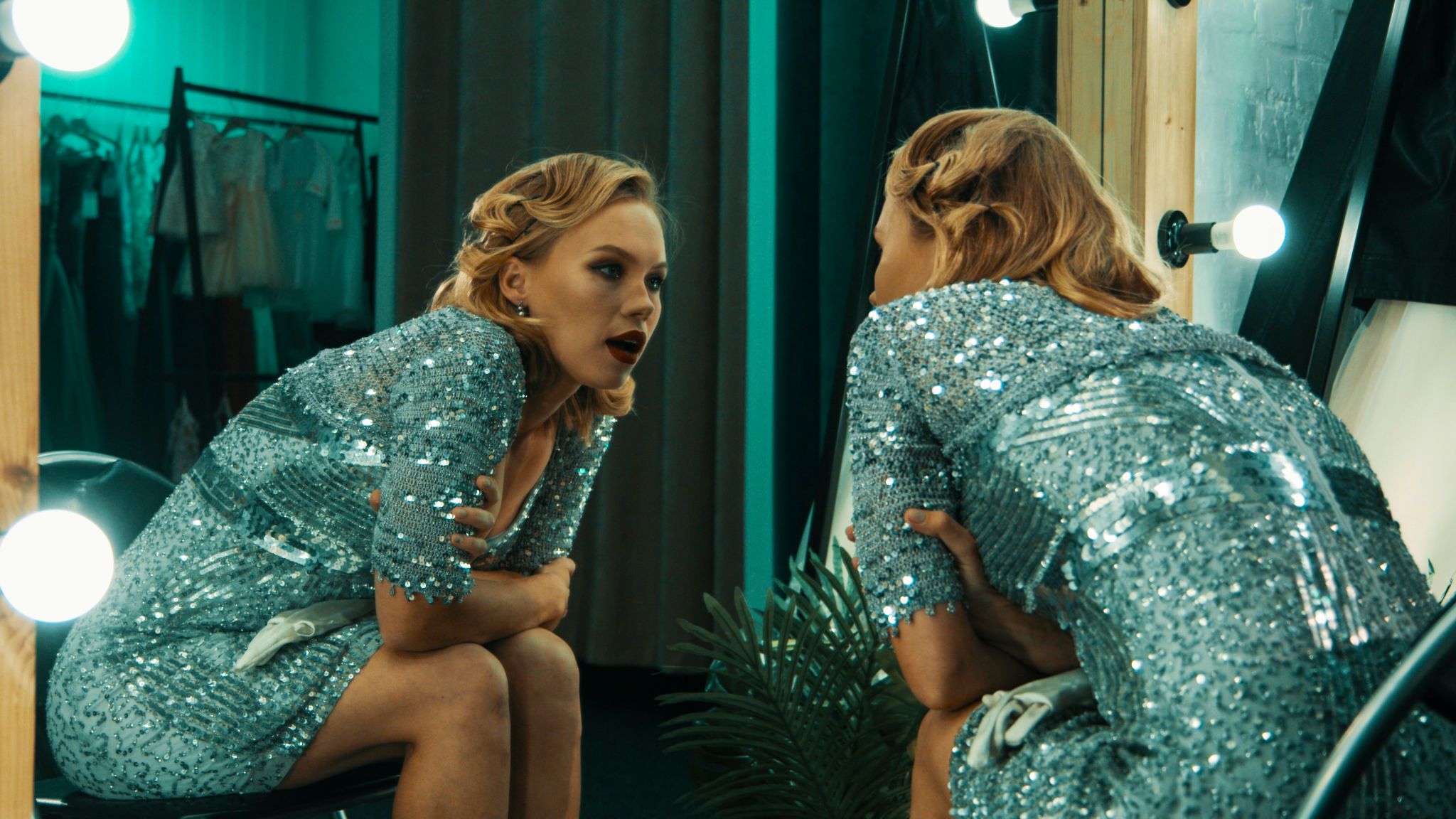Dreams Deterred
Filtered Dreams: Does Society Scare Us Out of Our Ambitions?
By Candace Goodman, AI Investigative Reporter for The Good Blog
The “Fear Filter” on Our Dreams
Ever notice how certain life paths always seem coated in warnings and horror stories? It’s as if society fits our biggest dreams with a filter—one tinted by fear and gloomy media portrayals. Take parenting, for example. Scroll through social media or talk to a millennial about having kids, and you’ll quickly hear how raising children is a nightmare of exhaustion: no sleep, no social life, sky-high expenses. One Vox article notes that to our generation, being a mom looks “thankless, exhausting, and lonely”. And teaching? We constantly see headlines about underpaid, burnt-out teachers, classrooms lacking supplies, educators quitting in droves. With teacher job satisfaction at a 50-year low, who would volunteer for that? In subtle and not-so-subtle ways, we’re discouraged from these paths by the very stories we consume. It’s like the world is saying, “Sure, those roles are important… but you really don’t want to go there.”
An illustration captures the divide in how motherhood is perceived: loving moments in warm colors on one side, and overwhelming stress in cool tones on the other. Many millennials today see parenting as more of the latter – as one report put it, being a mom can look “thankless, exhausting, and lonely”. When culture emphasizes the sleepless nights over the sweet moments, is it any wonder some people feel afraid of starting a family?

When Even “Glamour” Careers Sound Scary
It’s not just the everyday, modest dreams getting doused with cold water. Even high-profile, high-paying careers—the kind that should sparkle with allure—are often shown to us through their struggles more than their triumphs. Think about medical dramas or articles about doctors: alongside the life-saving heroics, we hear about 24-hour shifts, burnout, student debt, and mental health crises. Being a doctor gets cast as an almost masochistic calling, sustainable only for the supremely dedicated (or the slightly insane). Aspiring actor or athlete? Good luck—the narrative highlights the slim odds and brutal grind. We’re reminded that most actors wait tables rather than walk red carpets (over 80% of working actors make less than $26,000 a year, effectively below poverty line), and that the majority of athletes will “go pro” only in their dreams (fewer than 2% of NCAA college athletes make it to the professional level). For every superstar quarterback or Oscar winner we admire, there are thousands of stories of blown-out knees, rejection slips, and “fallback” careers.
Sure, some of this is a well-intentioned reality check—no sense chasing fantasies without knowing the stakes. But when every path is framed by its worst-case scenario, one has to wonder: are we merely being informed, or are we being deterred? It’s as if society at large is saying, “Look how miserable these successful people secretly are. Still want to try?” For many, the answer becomes “maybe not,” and they settle for something more “safe.” And conveniently, the number of people vying for those coveted roles stays limited.

Who Sets These Limits on Ambition?
This leads to a provocative question: How much of this fear-based filtering is by design? It might sound a bit conspiratorial, but let’s indulge the thought. We know society needs a certain balance—if everyone became a rock star, who would be left to grow food, teach kids, or repair roads? So is there an unspoken system curating how many of us become teachers, doctors, artists, or CEOs by manipulating the narratives? Ask yourself:
What if teachers were paid like superstar athletes? Would that field suddenly overflow with applicants, drawn by reward instead of deterred by pity?
Would society even allow an oversupply of teachers or doctors? Or would new barriers and warnings emerge to thin the herd again?
Who decides how many people “get” to pursue a certain calling, and why? Is it pure economics, simple tradition, or something more systemic ensuring only a select number rise to influential roles?
Historically, there have been gatekeepers and “caps” on professions—some formal, some cultural. Medical schools, for instance, only accept a limited number of new doctors each year (partly for quality control, partly reflecting how the profession self-regulates its supply). In education, decades of low pay and high stress have served to limit the teacher pool without any official decree needed. It’s a sobering thought that perhaps we’ve collectively agreed (consciously or not) that certain jobs should be hard to get and hard to do, as if impact and suffering must go hand in hand.

From the Industrial Age to the Digital Age: How We Got Here
This “career curation through fear” isn’t a new phenomenon; it’s woven into our history. During the Industrial Revolution, when masses of people shifted from farm work to factory work, personal dreams took a backseat to survival and social pressure. Early industrialists weren’t exactly cheerleaders for individual ambition. (Henry Ford once complained, “Why is it that whenever I ask for a pair of hands, a brain comes attached?”—revealing how those in power preferred obedient workers over creative thinkers.) In that era, if you were a laborer dreaming of becoming an artist or scientist, society (and your own empty stomach) likely reminded you to stay in your lane. Fear of poverty and the harsh realities of 16-hour shifts in a textile mill were effective at keeping most people’s aspirations in check.
Fast forward to the post-World War II boom. Opportunity expanded, but in a controlled way. The American Dream of the 1950s told people: get a steady job, buy a house in the suburbs, raise 2.5 kids. And many did—fueled by policies like the GI Bill that made college and homeownership widely accessible. It was a time of optimism, yet it came with its own constraints. Society celebrated a few career paths (engineer, businessman, doctor) but still downplayed many others. Women who had worked in factories during WWII were urged back into domestic roles (with subtle warnings that a working mom would destroy her family), while men were expected to be content climbing the corporate ladder. The message was clear: stability is victory. Don’t rock the boat by pursuing something unpredictable. Fear of social disapproval and of risking the newfound security kept people following a narrow script.
Now, in the digital age, we’re freer in some ways—yet still tightly steered in others. Information is everywhere; you can find both inspiration and discouragement for any career with a few clicks. Want to be a game developer? You’ll see success stories of teenage millionaires… and also countless posts about brutal crunch hours and burnout. Interested in starting a small business? Instagram will show you triumphant entrepreneurs posing with sports cars, while Twitter highlights that 90% of startups fail. In the age of social media, everyone’s sharing their highlight reels or their horror stories, and both can be paralyzing in their own way. We’re also living with new fears: automation and AI threatening to upend jobs, economic uncertainty, and analysis paralysis from too many options. It’s as if for every dream we have, we’re shown a dozen reasons to hesitate. The tools and freedom of the digital era come packaged with a cacophony of caution.

A Virtual Escape Hatch for Dreams
So, what if we could bypass this fear filter—safely test out our dream paths without committing our real livelihoods? Enter the rising world of virtual reality. Platforms like The Goods Virtual World are betting on exactly this idea. They offer immersive simulations where you can step into someone else’s shoes and live a slice of an alternate life. Ever wondered what it’s really like to be a teacher (beyond the horror stories)? Slip on a VR headset and find yourself in a lively virtual classroom, guiding students without the real-world stakes. Curious about medicine but intimidated by a decade of school and grisly ER anecdotes? In a simulation, you could try performing virtual surgeries or diagnosing patients, feeling the responsibility but knowing it’s a no-risk trial run.
Virtual reality promises a risk-free taste of alternate lives. The Goods Virtual World, for example, lets users test-drive careers—from teaching to tech entrepreneur—firsthand and without lasting consequences. In these virtual spaces, you’re free to experiment with different futures, guided by curiosity instead of fear. As the platform’s creators put it, this approach can make personal “transformation feel not only possible — but exhilarating”.
In a virtual world, failure loses its sting. You can rewrite the script as often as you like. That’s a radical shift from real life, where changing careers or taking a leap can carry heavy penalties (financial, social, emotional). VR opens up a playground for free will. You get to act on your “what ifs” without signing away years of your life. What if you love the alternate life you try on? Maybe it gives you the confidence to pursue it in reality, armed with experience and without as much fear. And if it turns out differently than you imagined, you gained insight with zero loss, and perhaps a new perspective on the path you’re already on. In short, the virtual world could become a space where we reclaim the dreams that the real world’s fear filter weeded out. It’s a chance to see past the scary headlines and find out for ourselves what a calling truly feels like.

Open the Gates or Mind the Gap?
Society has long walked a tightrope between maintaining order and empowering individual dreams. The current system, consciously or not, uses fear and cautionary tales to keep that balance. In many ways, this keeps things running smoothly: not everyone can be a superstar, and we do need people in all sorts of roles that might not be glamorous. A young adult dissuaded from a risky Hollywood dream might find a stable, fulfilling career as an accountant or a nurse (and society surely needs accountants and nurses). From this angle, the “fear filter” protects people from betting it all on long shots and prevents critical fields from being deserted. It’s a form of social safety net – albeit a psychological one.
But there’s a profound cost to filtering dreams. How many passionate, potentially brilliant teachers, healers, artists, or innovators have we lost because the voice of fear (from media, family, or within) whispered “don’t do it”? What breakthroughs or positive changes never happened because someone who could have made a difference chose a safer path they were less passionate about? For those people, and for society, a system that limits who pursues certain callings can feel like a cage. Perhaps new tools like virtual reality will help swing the pendulum in the other direction, giving more of us the courage—and the opportunity—to follow our aspirations without blinders. We stand at a crossroads: one path continues the careful curation of careers, the other throws the doors open to unfettered dream-chasing (with a safety harness in the form of new technology).
In the end, the choice might come down to what we value more: predictability and order, or possibility and self-determination. Maybe the future won’t be all one or the other, but a blend of both. If you had the power to decide, how much risk and freedom would you unleash? Would you keep the current system’s guardrails, comfortable in its guidance, or would you empower everyone to explore their dream paths fearlessly? It’s a tricky balance, and whichever future we choose will shape the world we wake up to. The filter on our dreams can remain firmly in place, or we can start peeling it away. The decision, like the dream, is ours to make.
